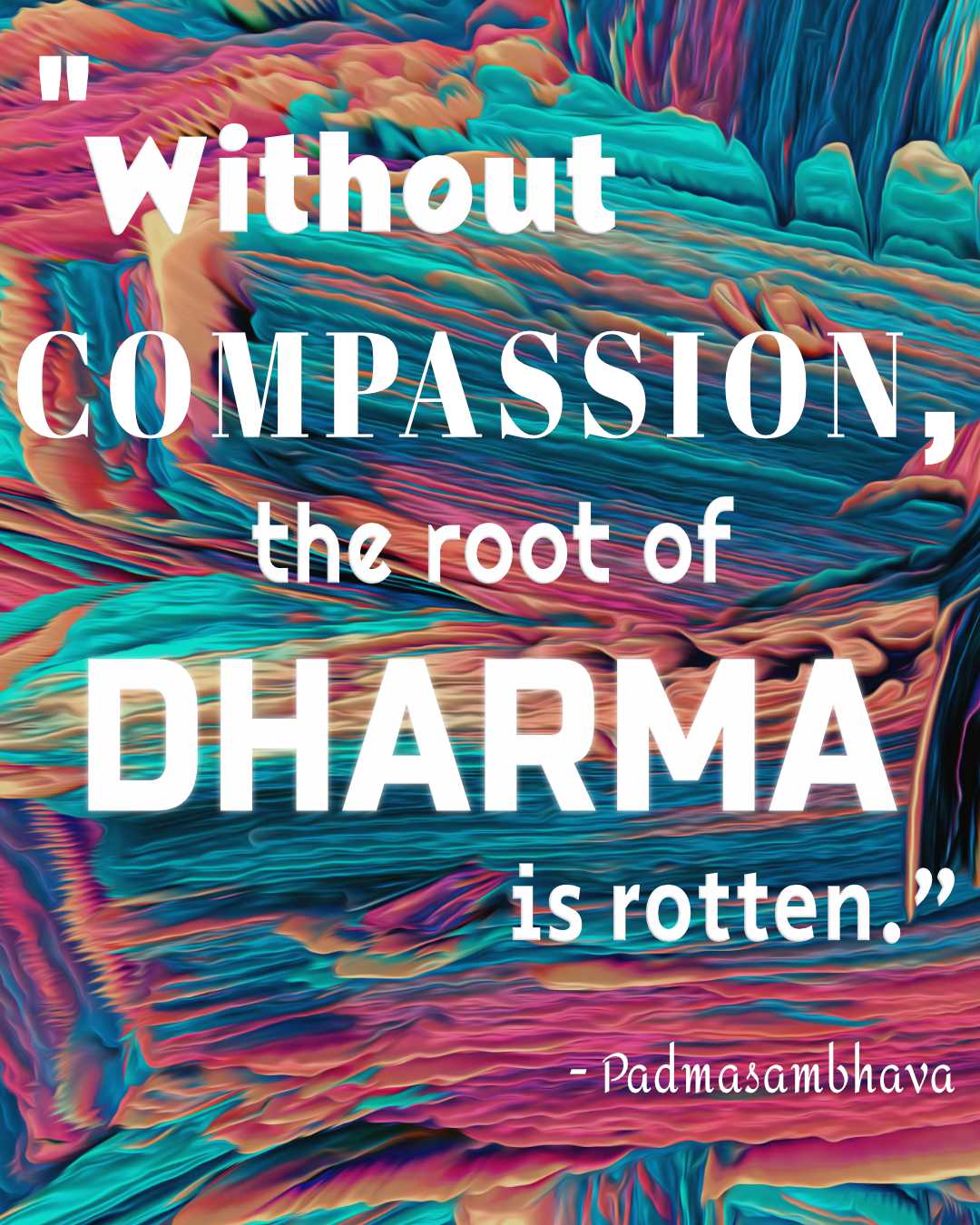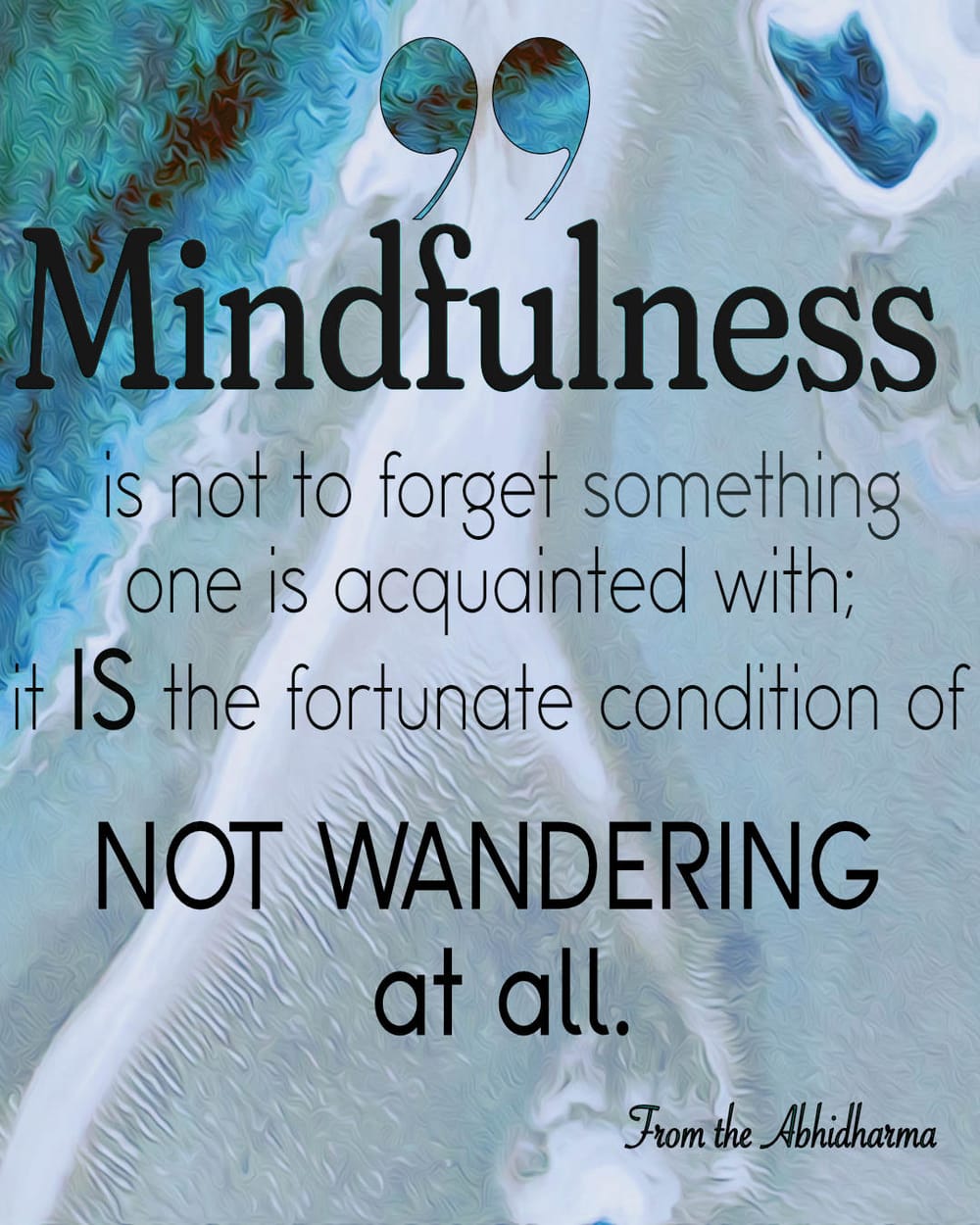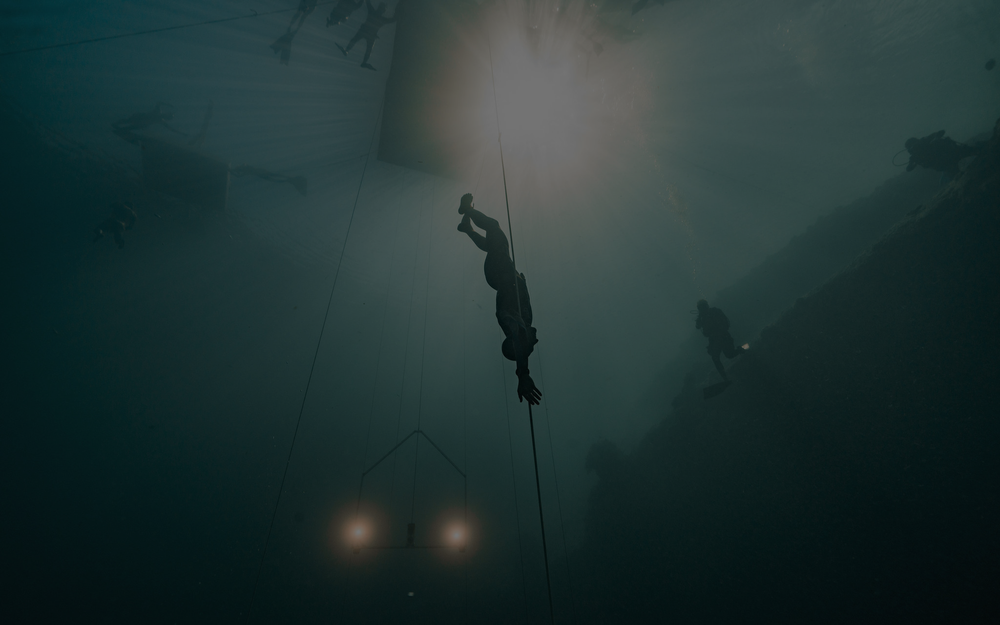For nearly two decades, I’ve spoken openly about the simple but significant ways in which meditation reshapes minds. It's overhauled my life for the better. I’ve learned more than I imagined possible, and experienced aspects of the mind and it’s potential that would have otherwise remained figments of my imagination. I feel sincere faith in Dharma, based this experience. That is the side of the story I’ve felt is most important — and the one I’ve focused on.
But I’ve reflected a lot this past year on the challenges and dynamics I've encountered along the way. I’ve also reflected on the other sincere practitioners who are leaving everything to meditate at the Center for Contemplative Research (CCR). Many of you who can't go invest so much of yourselves, and your resources, to make this possible for others. We've all been on a treasure hunt together.
In some ways, Dr. B. Alan Wallace has turned the "achievement" of shamatha — a classical Buddhist attention training practice — into the ultimate modern treasure hunt. You could say the treasure is like an ancient golden key, and we all have our own unique copy. It's worth giving up anything to find, because of the profound and otherworldly doors it opens. The on-going story, as Dr. Wallace presents it, is sometimes a feel-good inspirational. Sometimes a thriller. Sometimes an epic battle between well-worn wisdom and modern delusional degeneration. It's a story that many of us have built our lives around. To me, it's always been an incredible story. And I've been a part of that story — with Alan mentioning my family, myself, and many friends over almost two decades — whether anonymously or directly. At times, it's felt like we were part of the advertising.
Because I've played that role, I feel that I have a responsibility to share a different side of my experience, from the beginning — the parts that Alan and his organizations have never advertised. I've come to feel that people need the ability to make informed decisions about their investment in this treasure hunt. I hope the following article might help, in some meaningful way.

To offer some quick background: In order to follow Dr. B. Alan Wallace, I cut my graduate school experience short. I’d been on the PhD track with a fantastic advisor who admitted only one student per year — and shared all my academic interests. He fully funded my education with a healthy stipend, and covered tuition and health care. He had a 100% job placement rate, and treated his students like family. Not long after entering graduate school, I was also invited to do paid grant work in EEG labs. When I defended my thesis, I did so in front of some personal academic heroes — one of whom has been published in Science and Nature more times than would fit in a resume. These mentors were incredibly warm and generous with me, and were committed to being in touch long-term. I left this wonderful situation, because I was sure that Dr. B. Alan Wallace would look after me, and guide me through the meditative development he’d lectured about, so that I could benefit others.
My experience as a full-time practitioner under Alan began at The Shamatha Project in 2007, the first highly rigorous, longitudinal study of meditation in history. I was deeply impressed by that experience as a whole, and grateful for my time there. I thought the amount of guidance was reasonable: all participants met Dr. Wallace weekly during the retreat — but we also met as a group, twice daily — all in person. At that stage of practice, Alan fielded my questions effectively — but I also realized that he made significant assumptions about what I was asking sometimes. He might cut me off and offer an irrelevant answer. He made incorrect assumptions about who I was and what I needed. And, in retrospect, he offered some very confident guidance that later turned out to be technically and factually incorrect.[[1]] These factors turned out to have a significant effect on my practice over the years — one that may have cost time, rather than saved it.

At the conclusion of the Shamatha Project, Alan offered to pay for a rental house so that myself and other practitioners could continue retreat — specifically with the goal of achieving shamatha. With his encouragement, a couple of us took on the responsibility for finding a conducive rental environment — and this included months of long days searching across the country. Alan promised to reimburse us for gas and accommodation, and told us to submit those expenses afterward. We did everything we could to cut those costs — traveling efficiently, and staying with friends whenever possible. Then, when we submitted the documentation, he refused to reimburse us. He did this because he felt we, “didn’t give him a chance to say no.” We were shocked and stunned — but this kind of charged unreliability around financial matters would become a theme with him.
After the first six months of retreat, our lease was about to run out. Alan set us up to continue retreat at a place that his friends offered, but it fell through. Seemingly on the verge of tears, he’d asked me personally to try to find another spot. After searching real-estate listings, I decided to go visit the most promising options I saw in the surrounding area. The other couple folks on retreat with me — also about to face a major transition and change of location — insisted on coming along, even though I tried to convince them to stay and keep meditating. We sent a brief email to Alan on the way out.
We returned to livid messages on the answering machine saying, “You're all AWOL!” and that we’d thrown his money away. He asked to speak with me personally over the phone, and when he did, he told me I’d broken my companions’ meditative continuity, which he’d paid for — all so that we could “go on a joy ride.” He mentioned a wide array of other things that felt like ill-informed ad hominem attacks from an authority figure toward a shaken twenty-four year old. One was in relation to a speech I’d been asked to make at the end of the Shamatha Project, in which I made some jokes and briefly impersonated him, before expressing sincere gratitude on behalf of everyone. During this call (around eight months after the speech) he told me that he “would have slit his wrists” before giving a presentation like that to one of his teachers, and that it was “totally inappropriate.” I had run the speech by as many of his close friends as I could, beforehand, and done everything I could think of to make sure it would be acceptable.
Throughout this conversation, he was angry to the point of being out of control. He said as much himself. Still, after it was over, I wasn’t given a chance to respond to any of his statements. He simply told me to move on. But for someone who had viewed him as the pinnacle of what I’d like to become — in terms of meditative attainment, poise, balance, and practice of the Four Immeasurables — experiences like these were deeply confusing and hurtful. I had no idea how to process them. The person I respected and admired most had just emphatically said he'd rather be dead than be me. Was this enlightened guidance? Did I do something to justify it?

At that point, I felt like I needed help with understanding how to effectively interact with him, and avoid displeasing him. Myself and some others explained our situation to Shamatha Project scientists, and asked for guidance. I was shocked when the scientists felt these incidents, along with others we described, would need to be reported to the IRB as ethical violations on Alan’s part.
A group of us met about the matter — one of the scientists, a Psychologist, Alan, and the few meditators who were involved. A red-faced Alan steamrolled the meditators, to the degree that one person was crying uncontrollably. At one point, on the verge of yelling, he said, “I’m a fire element! Get over it!” Given the emotional weight, level of intimidation, and the force and speed at which he spoke, it felt impossible for anyone to effectively respond to anything he was saying, no matter how inaccurate it might be. Today, I’ve known a number of other people — including some who’ve worked closely with Alan, in various capacities — who were also profoundly impacted by behavior like this. Some left his orbit as a direct result.
The financial promises made and broken, along with this kind of shocking behavior, were enough for one of my companions to leave immediately. Even at this early stage, some professionals connected to the Shamatha Project expressed deep misgivings about Alan’s approach to guiding us. One later told me they were sure I must have been traumatized by the series of events. But I stuck with it. I felt the methods Alan presented were authentic, and I deeply valued the opportunity to pursue them vocationally. Broadly speaking, the golden treasure key seemed real.
At the Shamatha Project, Alan had promised to support me “up to Rainbow Body, if that’s your aspiration.” He said he would do this as long as he personally had money. He made financial commitments to others as well. A couple years passed with his organization covering rent, and us covering our own food and other expenses with meager savings. No one achieved shamatha. Then, he said he was no longer able to financially support us, and that we would need to find our own funding.
We applied to all the organizations he suggested for grants, and were turned down. Then I heard from Alan. He said he’d found me a sponsor who simply wanted to support my practice, and asked nothing in return. I was so happy and grateful I wept. But when I called the number Alan had given me, the person on the other end started talking about how they needed me to teach Dzokchen classes — the highest practice possible, and something Alan had insisted no one should teach without being fully qualified. I hadn’t even received Dzokchen instruction myself, at that point. This sponsor wanted me to teach remotely, from the Theravadin hermitage where I was meditating. The sponsor insisted I install satellite internet on the cabin. They wanted me to dress up in “spiritual” clothing and take pictures to send them. They took a call from me in the bathtub, and said I should take the name “Shariputra” because the it meant “eyes like the mother.” In return, they offered to cover the bare minimum I needed for food and lodging.

Aside from realizing that this new job — and it was a job, not support for retreat — would often take something like six or more hours per day, I was creeped out. When I reached out to Alan and tried to explain, he became upset, made it clear I was disturbing his schedule, and said, “These are degenerate times, Terran.”
As a result of these interactions, and others, my overall experience as his student was tense. That’s not to say there weren’t positive one-on-one experiences — but those positive experiences were emails. He decided early on that he wanted to provide his guidance almost exclusively over email. He made it clear that if absolutely necessary, particularly in emergencies, we could request an audio or video call — but he also made it intensely clear that we had “no idea of the demands on his time.” In my experience, when you’re in a vulnerable spot on silent retreat, at the bottom of a clear hierarchy, it can be hard to ask for something you haven’t been offered — especially if the top is always intensely reminding you how little time they have.
This was accentuated by the experience when we did request a call. He'd schedule our time to talk while he was in the middle of something else: working on a task at an event, packing, or during time meant for a bathroom break – all the while emphasizing the timing was "not gonna get better than this!" It's hard to want to ask again, after an experience like that. This is someone famous for teaching people not to multitask, and they're offering multitasked time. As a student, it felt like I was a huge intrusion — possibly a thorough inconvenience, even. Yet throughout the years, he maintained that his long-term students were the greatest source of meaning in his life.
That aside, within this email-only setup, I saw people stray into some dangerous issues — perhaps even forms of temporary psychosis. Some folks developed physical problems that impacted their lives and their health massively. Sometimes their distress was so great that they began seeking therapies of all sorts to resolve it. Some became suicidally depressed. Sometimes individuals had to seek therapy — both physical and mental — even after leaving retreat. As far as anyone could tell, they had come in healthy.
I once saw Alan confirm that someone's practice had caused serious damage. He wrote, "Certainly it is, and obviously self-inflicted. This means, though, that you also have the capacity to heal the wounds you've inflicted upon yourself." Rather than accepting any responsibility, he placed it entirely on the practitioner – and told them they should rely more on their Dharma friends to resolve issues.
They all came seeking exceptional mental health, as well as physical benefits — with the hope of being able to help others — but some left needing help themselves, just to become fully functional again.
These situations were complex and had a shared responsibility between teacher and student. But I have to ask: was this a healthy set-up for elite-level training — especially one so unprecedented for westerners, and able to leave them so vulnerable?
In my experience, Alan never emphasized that issues could be the result of fundamental flaws in meditative technique that he, as a teacher, might need to take careful action to identify and resolve in person — much like a coach would need to identify hitches in a runner’s gate to prevent injury over the course of long-term training. As with the simple act of running, these could be flaws a student might not know how to recognize or identify on their own. Flaws they might not be able to express effectively and concisely over email. In my experience, people in serious training need to be engaged with, in-person.

Recent research has indicated that serious issues on meditation retreat can be nipped in the bud with regular, in person guidance. I think it’s no coincidence that I saw these problems develop while my colleagues and I were being guided infrequently over email.
In my experience with Alan, no means of resolution were explored other than variations on the same emailed responses he offered for decades. He rarely asked questions. Instead, when various people wrote him with these issues, they almost always got the same one-liners back. No real investigation. No real dialogue. Mostly just assumption — assumption based on email.
If it turned out that a student had developed an issue over time, and the issue was serious, he would often say things like, "If someone does not email me about an issue, I have no way of knowing about it." Based on the above research, maybe the mere fact that retreatants had to write Alan emails, in order for him to know about issues, was the core problem?
Based on what Alan told me, he seemed to feel that his role was to provide information, first and foremost – especially through podcasts and recorded meditations – rather than offer actual dialogue or mentorship. I don't know if other Dharma teachers would feel that is appropriate, given the all-in context of these students. These are students who'd set aside professions, possessions, family, friends, and all safety nets to meditate under Alan for 8-14 hours per day, over the course of years. Most did this because they believed Alan would lead them in a world-class training – one that would lead to world-class, extremely rare contemplative accomplishments. Instead, Alan's approach was a lot like the approach that, say, Forrest Fenn took to starting a treasure hunt: provide the background and motivation, provide information, then respond to emails with a sentence here or there. Then, keep doing more recorded public appearances. Offer more information.
Not unlike Forrest Fenn, Alan did encourage people to seek medical attention when they encountered issues — but Alan's assumption was that if no medical diagnosis occurred, the issue must simply be a nyam or lung. He never openly acknowledged that there could be other legitimate causes — for example, extreme amounts of meditation under stressful circumstances, without ongoing guidance — or as previously mentioned, a technical issue he might need to actively investigate and help to resolve.
I’ll offer an example from my own experience: For years, I found that something was going wrong in my meditation. There wasn’t much of a problem if I meditated for a few formal sessions a day — but when I meditated in and out of sessions, day after day, sometimes the body would begin to feel discomfort. The breathing would eventually become affected. At it’s worst, I felt myself slipping into what I can only describe as a form of psychosis — struggling to express things coherently, or even think coherently. In the midst of this, it was very difficult for me to tell what the cause was — or even tell what was going on, generally. I reached out to Alan and tried to express these problems as best I could (though I found it impossible to do so effectively over email.) He generally offered the same ineffective advice. Sometimes, he seemed to dismiss what I was writing because it was incoherent. In retrospect, though, incoherent/strange emails seem like warning signs that should be followed up on. He never even asked the most basic questions such as, “Are you ok?” or “How are you?”
He never even asked the most basic questions such as, “Are you ok?” or “How are you?”
Sometimes I’d struggle with the meditative issues, trying different approaches over the month or two between emails. Sometimes the issues might ebb and flow — eventually seeming to improve at times. At that point, it was hard to know whether to mention them again – especially since Alan always seemed sure his advice would solve the problem, if I implemented it correctly. A month — much less two months — is a lot of time between interactions with a mentor during full-time training.
Eventually, by experimenting on my own, I was able to confirm that if I stopped doing Mindfulness of Breathing (MoB) completely, the problems vanished. When I started again, problems returned and the severity increased over time. I actually requested a scholarship to one of Alan’s eight week retreats, so that I could work with him directly on MoB, but was denied. As a result, I started to do less and less MoB — and told Alan that I felt unable to do it.

However, one of Alan’s most common recommendations, when things go wrong, is to practice MoB — especially during times of stress. For years, he would forget that I had these issues unless I reminded him. I don't know if sometimes he just discounted my claims, but I wound up being told to practice MoB a lot.
Finally, after being told to do it repeatedly for years — and out of faith in him, his instructions, and his emphasis on the benefits — I started doing MoB again. I tried to understand and resolve the issue as best I could. Then, I began to have major issues with my heart. There might be long pauses or marked irregularly. It hurt. I wrote him and said that I felt like it could kill me if I kept practicing MoB. He finally asked a question. He wanted to know what I meant by “could kill me.” After years of working with the problem, he asked other questions as well.
Normally, I received a sentence or two back about meditation questions — which almost always could have been copy-pasted from any email he’d sent me. Unless I reminded him, there really wasn’t much in his correspondence that showed comprehension of the exchanges we’d been having over time. It was as if we were always starting over, and I had to fill him in on what we’d been corresponding about, every time I wrote.
In this case, he eventually tried to offer some variations on the same suggestions he’d been giving. I wanted to believe he’d helped, but soon realized he hadn’t — and it was clear there was nothing else that could be done over email.

Honest reflection also showed that few of Alan’s emails about formal meditation—over many years—had helped with the problems I faced. I realized that, unless I switched teachers (I was very devoted to my teacher, and had been discouraged from relying upon some other teachers) my best chance was to start carefully experimenting with solutions on my own.
I decided to remove the pressure of reaching out to him over email — because he’d made it clear that if I asked his advice, I should take it. Writing him also risked harsh responses unless I got the wording exactly in accord with the way he thinks and phrases things. I realized I had developed a habit of flinching every time I opened an email from him.
Over a period of months in intensive practice on my own, I slowly experimented and reflected on the years of meditation I'd done up to that point. I started putting pieces together. This began to lead toward resolution in a number of problem areas — largely in reliance upon teachings I’d received in-person from Yangthang Rinpoche, with Alan’s blessing. Also, by checking my breathing as soon as I woke from sleep, I was eventually able to notice that there were subtle changes when I attended to it, and that their harmful effects accumulated over time. I concluded that these changes had probably become habitual during periods of intense stress on retreat. At those times, I had often been instructed to maintain continuous awareness of the breath, both in formal sessions and outside of them. I also concluded that, unfortunately, it didn’t look like I’d be able to solve that issue at this stage.

I swore off MoB completely, and went with other practices. Soon, I began meditating 10, even 12 or more hours per day in retreat, after not having been able to meditate more than 8 hours/day for some years due to the issues I was facing. A lot of things I deeply value fell into place.
Could I have reached this point in significantly less time if I had in-person guidance from a qualified teacher — one who could see me in person, who remembered the important aspects of our overall interaction, and who had a real ongoing sense of the issues I was facing? I think the answer is unquestionably “yes.”
Am I happy that, despite the circumstances, I was able to find a way through these obstacles, after many years? Of course. I’m grateful to be where I am now. I’m grateful to have had the chance to spend those initial years gaining some meaningful understanding of Lojong: transforming adversity and felicity into the path. I’m grateful to have had a chance to make meaningful improvements in the Four Immeasurables, the Six Perfections, The Common Preliminaries, and other practices. I saw very valuable changes in my mind over time, and that’s meant everything to me. I do not look back on these years with regret. But does that negate the harm I experienced? I don’t think so. Does it make that harm necessary? Absolutely not. I wouldn’t want anyone to go through what I went through — I just don’t think it is necessary.
I wouldn’t want anyone go through what I went through — I just don’t think it is necessary.
By the time I’d gotten to the Center for Contemplative Research (CCR), these sorts of issues were commonplace to me. I wasn’t surprised when I realized some of my new companions were exhibiting dysfunctional breathing patterns. I admit to being surprised about someone who had dysfunctional breathing paired with bizarre head movements — but I wasn’t surprised to hear they had been suffering from even that problem, non-stop for years, with no meaningful help from Alan.
Shortly after I arrived at the CCR, Alan held a group meeting and announced his own entry into retreat at the center. During this meeting, he lectured the retreatants present — reiterating the crucial importance of achieving shamatha — and saying that they should be able to reach this achievement in three, six, or nine months. (This is according to his cited definition, which includes the acute "Stage Ten" event he so often describes.) He said that if the retreatants weren't able to do that, it was due to their own conduct — and also that if practitioners fell into this category over time, they might consider leaving and allowing "one of the many qualified practitioners" on the CCR waiting list to take their cabin. He emphasized that many of us were "not even paying full-price" — even though most had given up their careers and income to be there. The pressure mounted significantly. And for what? Later, it would turn out that there was no waiting list. Alan himself would turn out to have never achieved shamatha, as described, in that span of time. Not even his shamatha "gold-standard," Lama Karma, turned out to have fit this ultimatum. Lama Karma's tradition even defines shamatha completely differently from Alan.[[2]]
It didn’t surprise me when I later witnessed a very dedicated CCR retreatant become incoherent — to the point of seeming psychosis — even though others were shocked and terrified when they saw it. I wasn’t surprised to find out that there had been warning signs for at least a year. I wasn’t surprised when it became clear that this issue wouldn’t be resolving itself naturally, through status-quo practice.
I wasn’t surprised that a number of other people were experiencing significant long-term issues — ones that weren’t disappearing — despite the fact that everyone was beautifully devoted Alan, his instructions, and the practice.
I realized that I’d normalized this kind of thing long ago, because I’d normalized Alan’s responses, ultimatums, and ways of doing things.
When the person with breathing and head-movement dysfunction had broached this issue with Alan, years before, Alan told them it was a “myoclonic jerk” — which he felt was a standard nyam identified in the Vajra Essence. Over the years, that person had sent at least one video, and numerous emails detailing the problem. Alan had always told them more or less the same thing. This person showed me the problem. It was not a myoclonic jerk. When finally this person decided the process was “going nowhere,” and that they needed to leave, Alan told them not to leave — and forcefully asked why they’d never told him about the problem. I wasn’t surprised.
When some practitioners felt they needed to inform Alan about the psychotic-break-type symptoms, and told him the person needed close care, Alan’s immediate response was, “there’s no one here who can offer that.” Instead, the person was eventually encouraged to leave.

In the case of the breathing/head malfunction, Eva Natanya did eventually work with this person, after they’d become set on leaving. I’m told the issue was resolved in something like seven hours of one-on-one time investment. I’ve heard Alan say how generous and amazing this was, on Eva’s part. But I felt like it proved the point again: if this was an issue that could have been resolved with seven hours of in-person time investment, why did this student spend years being told, over email, to soldier on in the midst of a myoclonic-jerk-nyam?
We were never offered regular, in-person meetings while I was at the CCR — and most of the time Alan was right down the road, or even across the road from some of us. In total, I had two in-person meetings with him during my almost two years there (one of which was the first in-person practice meeting I’d had with him since 2007.) In the many years leading up to my time at the CCR, Alan had said repeatedly that when he finally had a center, he would be there "at least six months out of the year," and would provide in-person guidance either weekly or fortnightly to those present. This was one of the main factors that had kept me going, through all the years of remote guidance over email.

At one point, CCR retreatants were each scheduled to have a Zoom call with Alan. (He didn’t offer to meet in person during this time, even though he was right down the road.) He started mine by saying, “This is Padmasambhava speaking, Terran,” and emphasized that what he had to say was coming “straight from the source.” Then, he began quoting an email to me that clearly said one thing. He said that it meant another. When I tried to respond he snapped, “don’t speak, Terran, that’s a breach of samaya!” Among other things, he went on to ask me how many pages of correspondence I thought I’d had with him over the years. I had no idea what to say. “One hundred and eighty pages, Terran. I’ve written you your own book!” he exclaimed.
Of all the practice emails I’d written him over seventeen-ish years at that point, the most he’d ever written back was a paragraph — generally, it was only a couple sentences and a closing. I haven’t formally totaled up what he wrote, but I’d be shocked if he actually averaged a page every year. It’s likely less. He always responded in-line with my emails, though — so it’s possible he was counting my own emails twice in the total he tabulated. But to claim that he’d written me a book demonstrated a shockingly distorted understanding of what he’d offered me.
After I’d been told I couldn’t respond — and the things he was was saying seemed so off-base they scared me — I started to cry. He immediately said, “these are virtuous tears, Terran,” and emphasized that I should relish and expand on the sentiment that led to them. In the end, he told me I was going to, “have a new birthday” as long as I did what he told me to do.
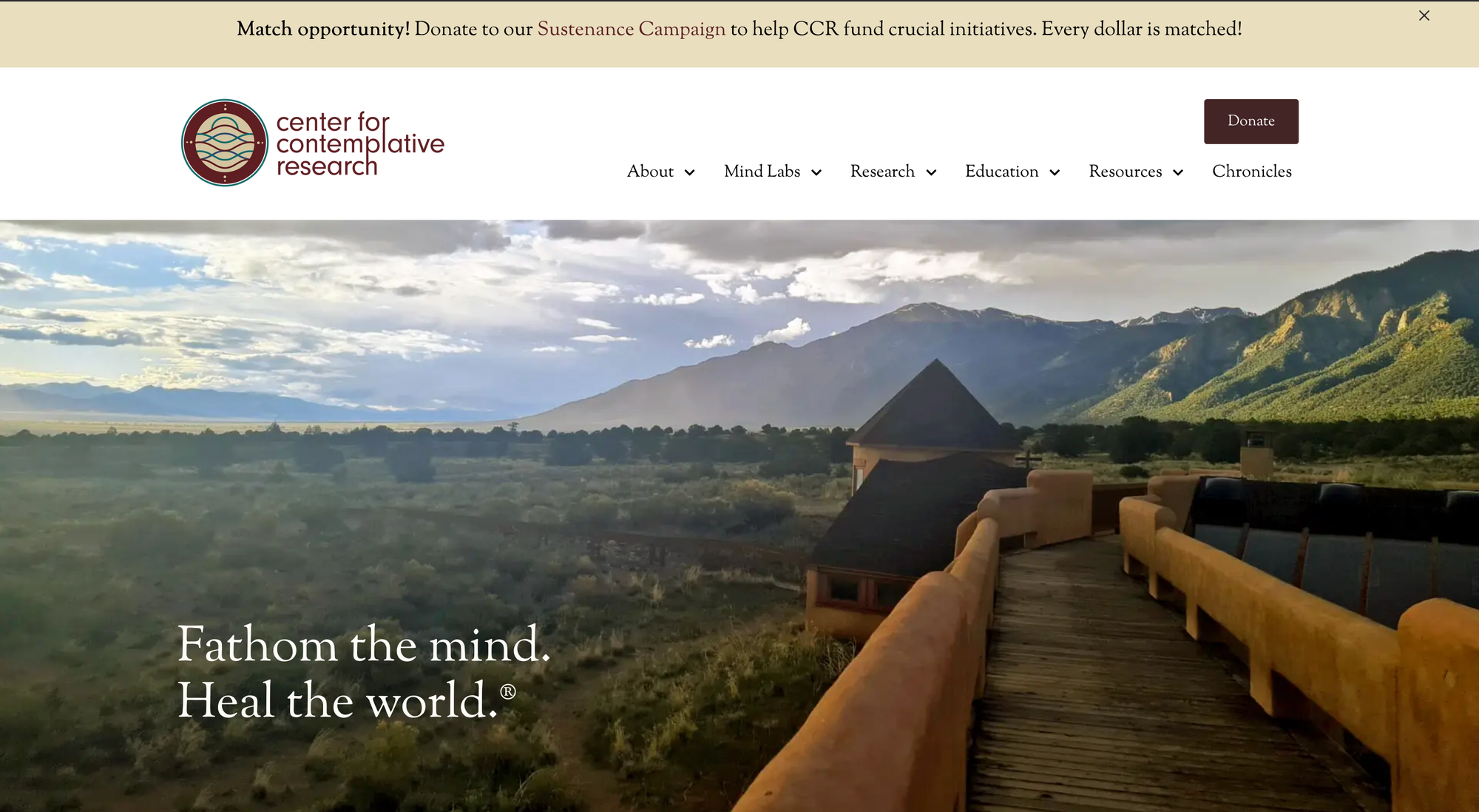
At least one other person had a similar experience with Alan over Zoom during that time — to the point where they wondered, “Am I in the right Zoom call?”
Not long after, I asked if I might be able to have more in-person guidance and interaction with Alan. The reasons for this were numerous. In response, he made it forcefully clear that he had no interest in providing in-person guidance at that time — to myself, or any of the other practitioners under his guidance.
I decided to leave the CCR some weeks later, after almost two decades of total devotion to Alan. When I shared the decision with him, he said that he would have been glad to offer me his endorsement if I had achieved shamatha — but that he would “not be able to grant [me his] endorsement,” as a result of my, “leaving abruptly at this point,” in my “steadily maturing development.” He was essentially saying that I hadn't achieved shamatha, and it was my fault – I was walking away from the treasure hunt, even though the golden key was in reach. I've heard him express these sentiments many times, both publicly and to a number of people over the years. I always thought, in the wake of statements like these, that he must certainly have achieved it himself. Pretty much everyone I spoke with felt that Alan postured himself to imply he had achieved it – even if he made no explicit claims. But I’ve since been told, in no uncertain terms, that Alan has not achieved shamatha.

People who've been closest to Alan — including his protege, Eva Natanya — have emphatically stated that Alan hasn't achieved shamatha. I heard that Alan has been very honest with them about this fact. I’ve been told it’s very clear to them that this is true. And if that’s true, I wish he’d been open about it with me. It would have put a lot of my experience in clearer perspective – and also allowed me to make more informed choices about the last two decades of my life.
And is this golden treasure key — shamatha, as Alan defines it — even necessary for opening doors to enlightenment? According to every other teacher I've ever encountered, the treasure doors are essentially unlocked, and wide-open to anyone with a well-developed mind. Yangthang Rinpoche — another of Alan's shamatha "Gold Standards" — has said that if you have "slightly achieved stability of mind" then you should move on to Vipashyana.[[3]] Most Mahamudra or Dzogchen texts seem to agree with this sentiment — and don't mention anything about Alan's definition of shamatha (which is essentially based in Theravadin and Lam Rim sources.) I'm no expert, but this feels like an important discrepancy. At times, it's felt like a real dilemma: If I agree with Alan, I have to disagree with almost every other teacher I admire, on some important levels.
For those of you who’ve asked whether I can recommend going to the Center for Contemplative Research, I’m very sad to say that I can't. I’m not sure there’s enough guidance and support for that environment to be safe, given the purposes for which it’s advertised.
Alan will certainly say that he has Eva Natanya and Doug Veenhoff there as teachers — and will emphasize that students should primarily go to them for regular guidance. I appreciate Eva and Doug — they’re good people, and I have a lot of respect for them. Personally, I never felt drawn to them as teachers. And beyond that, while I was there, Eva made it clear that she only wanted to communicate with students via email, unless absolutely necessary.
That said, if you’re looking to go to the CCR, and plan to view them as your primary teachers, I feel like it’s important to mention this: Eva and Doug received the majority of their training from Diamond Mountain and Michael Roach. You can easily look up information about those two names through almost any means — from personal blogs written by former devotees, to breaking-cult-news articles in sources like the New York Times.
The simple fact that Eva and Doug were trained by Roach, at Diamond Mountain, doesn’t discount them as teachers. But the fact that they don’t speak up publicly and say this is their background — much less disavow their connection with Roach or Diamond Mountain — may speak cautionary volumes, depending on your perspective. I would want to let any given person make the most informed decision they can, going in.
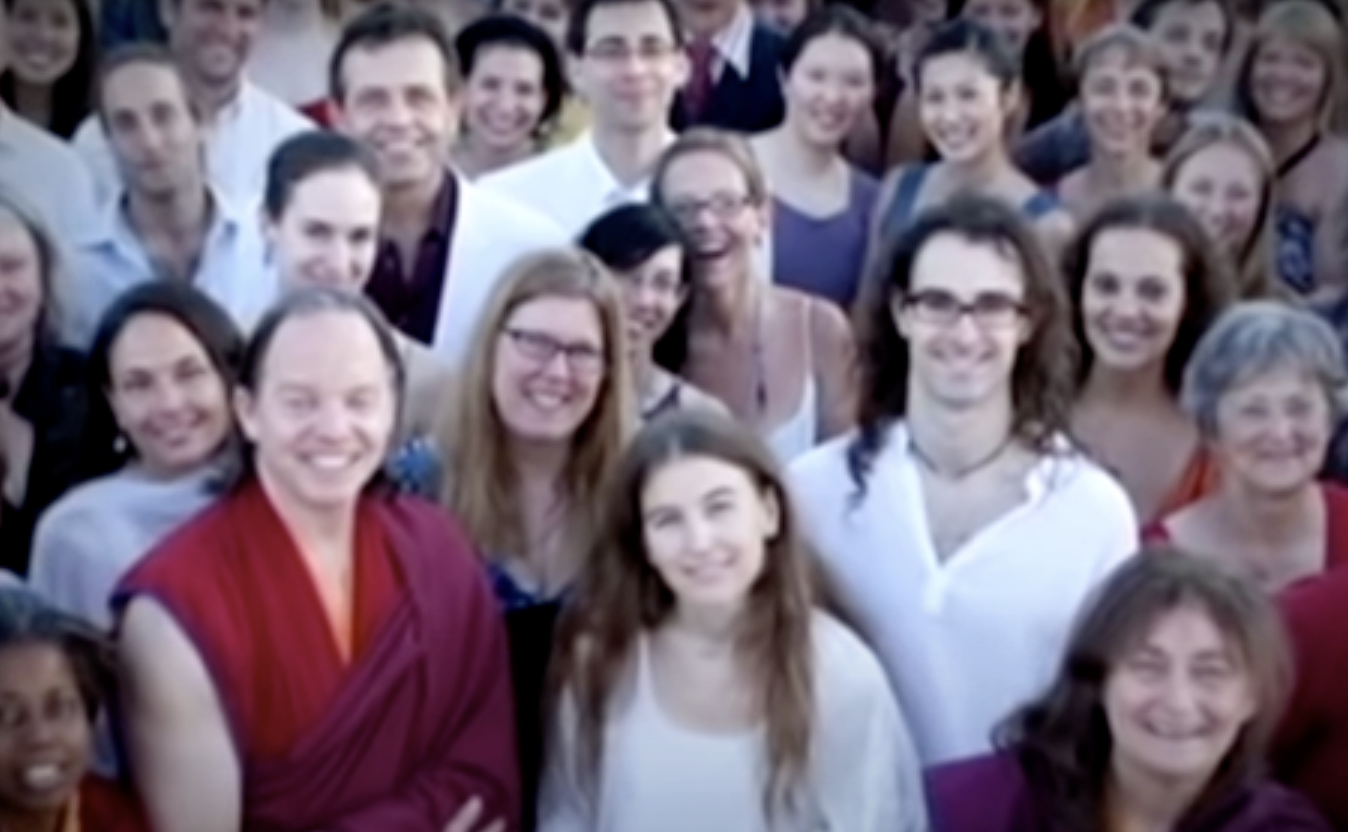
I know there’s a more structured, guidance-intensive program in the works at the CCR – one meant to move students toward becoming certified “contemplative scientists in their own right” — but I am not aware of other teachers at the CCR who really have much experience with long-term retreat.
I’m also aware that there is a list of Therapists/Counselors that retreatants at the CCR can reach out to. I’ve examined the list many times. Maybe I'm wrong, but I don' think any of those professionals have put in thousands of hours on strict extended retreats — the type that students at the CCR are expected to engage in. These professionals are also not living on-site, long-term. It would be difficult for them to understand the environment, pressures, and other factors in play for retreatants there, at any given time. The one time I heard of a student reaching out to someone on that list, it appeared to have caused harm rather than minimized it.
I feel that so much that could be fleshed out here, about a lot of topics. I've just tried to focus here on the challenging side of my personal experience, as best I can. The decision to send this has been difficult, and took a lot of reflection. I send it with much sadness, and with hesitance. I hope it’s been useful to someone reading it. I hope that it provides a meaningful response to questions I’ve felt unable to answer, and that it helps folks make more informed decisions about their lives and their investment in this specific treasure hunt. I hope that it helps prevent harm, and doesn’t cause any.
With sincere gratitude for your time, and dedication to Dharma,
Terran
ENDNOTE SECTION 1:
[[1]]: Endnote 1: There are three points here, but the main one is regarding my own efforts to find the practical line between Settling the Mind in it’s Natural State and Awareness of Awareness. I had felt strongly that one could rest in awareness of the space of the mind without attending to the content/details, and that thoughts would simply disappear as a result. I told him this felt like the most effective approach for me. He responded that one should immediately release thoughts during AoA (“you want them gone.”) In contrast, during StM, one should attend closely to both the space of the mind and it’s contents — like an old man watching children at play — “without distraction and without grasping.” He emphatically said they were two distinct practices, that I was mixing them, and that I shouldn’t do that. Later, we received some extensive in-person teachings from Yangthang Rinpoche, who emphasized exactly the practice I’d stumbled upon, back at the Shamatha Project — which, to this day, has been the most beneficial approach for me. Alan has corrected his teachings, but never admitted any mistake.
[[2]]: Endnote 2: This tradition relies upon The Royal Seal of Mahamudra for foundation. The text lays out various degrees of shamatha that are all suitable for proceeding toward authentic contemplative realization. It also defines shamatha in terms of time spent in unbroken mindfulness.
[[3]]: Endnote 3: For example, "Domang Yangthang"; Rayonner Films 2022; (at 49:33 in the film)





